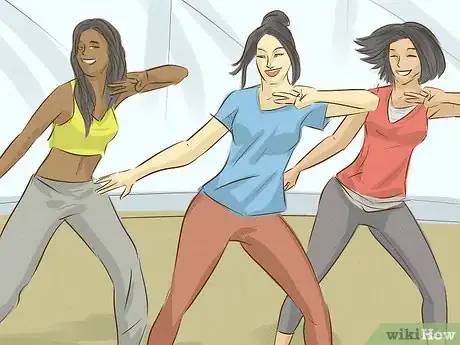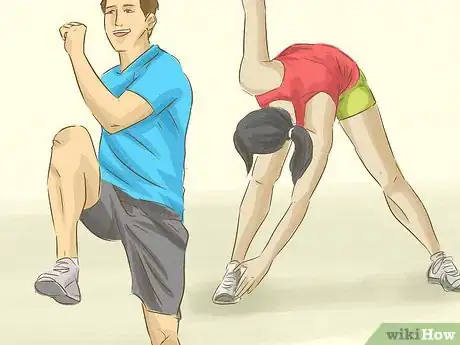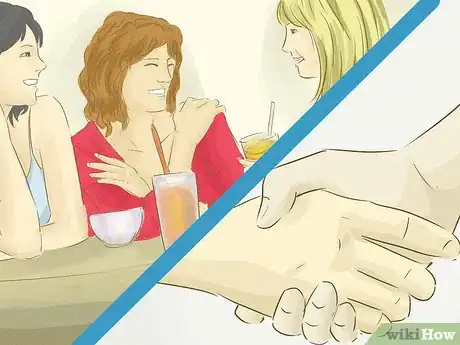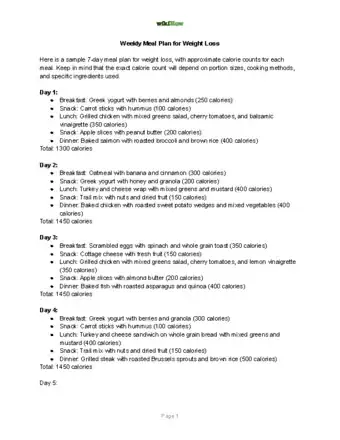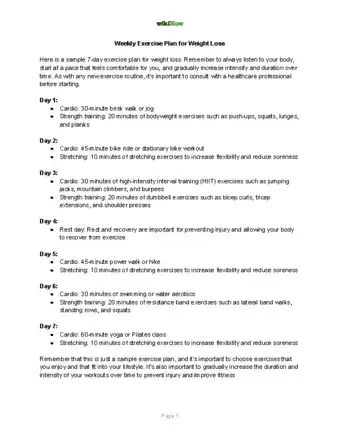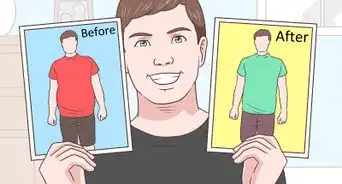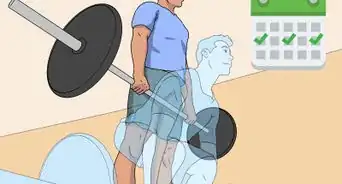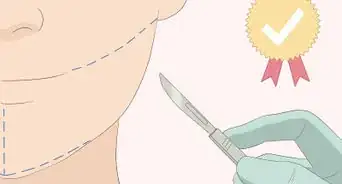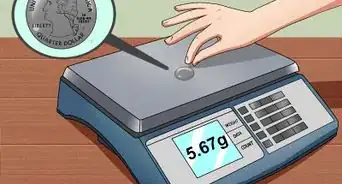This article was co-authored by Francisco Gomez. Francisco Gomez is the Head Coach at the FIT Potato Gym, a training gym established in 2001 in the San Francisco Bay Area. Francisco is a former competitive runner who helps endurance athletes train for major marathons like the Boston Marathon. Francisco specializes in Injury Rehab, Flexibility, Marathon Training, and Senior Fitness. He has a B.S. in Nutrition and Exercise Physiology & Running.
There are 26 references cited in this article, which can be found at the bottom of the page.
This article has been viewed 49,118 times.
In the time of quarantine, many people are trying to lose weight more than ever. It's natural for anyone attempting to lose weight to want to do so as quickly as possible. It is critical to set goals. A one-week weight loss goal should be part of a larger plan. Even if the overall goal appears to be large, consider it a journey rather than a destination. You'll develop new eating and physical activity habits that will assist you in living a healthier lifestyle. These habits may aid in the maintenance of your weight loss over time.[1]
Steps
Preparing to Lose Weight
-
1Consider talking to your doctor before losing weight. Before attempting to lose weight in a short period of time, it's a good idea to consult with your doctor about any weight loss plans or diets you want to try. When it comes to losing excess weight, your doctor can be a valuable resource. Although you may feel embarrassed discussing your weight with your doctor, keep in mind that your doctor's job is to care for your health. [2]
-
2Track your before and after (optional). If you want, you can take photos before you start losing weight and again after to see how far you've come. Measurements can also be taken prior to losing weight (optional). This is another optional step. You can track your progress and see if your weight loss plan works by measuring your waist and weight before losing weight.Advertisement
-
3Set a realistic goal. Instead of setting an unrealistic goal and worrying about it, set an achievable goal and strive to achieve it. Set a realistic and achievable goal, such as "I want to lose one pound in one week" or "I want to lose half a pound and make healthier eating choices in seven days." [3] Don't set a dangerous goal, such as "I'm going to lose five pounds in one week," as this can be extremely harmful and discourage you when you don't reach that specific goal.[4]
-
4Avoid dangerous diets. Diets to avoid include juice cleanses, less than 1,200 calorie plans, celebrity "weight loss challenges," liquid diets, and programs that rely on stimulants (such as medication). Programs that promise to help you lose 5-10 or more pounds in a week may be tempting, but they are not worth your time, energy, or money and can harm your physical and mental health. Worst of all, these diet rarely work in the long run, so all your efforts will be wasted.[5] [6]
- Short-term diets rarely work and often deprive people of their daily caloric needs.
- To sum it up, don't set a restrictive diet. You need to eat at least 1,200 calories a day to avoid setting your body into starvation mode. Weight loss is not about punishing yourself or enduring a diet that you despise. A healthy, long-term weight-loss diet should be nourishing, enjoyable, and provide you with the energy you need to feel your best.[7]
Altering Your Diet
-
1Drink plenty of water. Water can be extremely beneficial for weight loss. It is completely calorie-free, helps you burn more calories, and may even suppress your appetite if consumed before meals. The advantages are magnified when sugary beverages are replaced with water. It's a simple way to cut back on sugar and calories.[8]
-
2Avoid HFSS foods. HFSS stands for High (saturated) Fat, Salt or Sugar foods/drinks. Limit the amount of sodas you drink, added sugar you consume, factory snacks (such as packaged chips) and saturated/trans fat you intake. These three things can cause you to gain more weight and give you extra calories you don't need.[9]
-
3Eat nourishing and nutritious foods. Eat a variety of foods to get a variety of vitamins and minerals. Fruits and vegetables are naturally nutrient-dense foods. Nutrient-dense foods include lean meats, fish, whole grains, dairy, legumes, nuts, and seeds.[10] Every meal should consist of at least one serving of:[11]
- Protein: Protein help repair your body, coordinate your body, and keep you fuller for longer. Proteins include beans, lean meat such as chicken breasts, eggs.
- Carbohydrates: Carbs fuel your body and give you energy. Carbs include pasta, rice, fruits. Be careful with carbs, as eating too much can give you more calories than you need. Per meal, you should one handful serving of carbs.
- Vegetables: Vegetables are rich in fiber, water, and help you feel full for longer. Vegetables to eat include leafy greens like spinach, kale broccoli brussel sprouts, and carrots.
-
4Eat mindfully. Several studies have suggested that mindful eating strategies can help treat binge eating and aid in weight loss.[12] [13] Mindful eating can help you lose weight by changing your eating habits and reducing the stress associated with eating by slowing down your eating and helping you eat less. Here are a few ways to eat mindfully: [14] [15]
- Remove any distractions while you're eating; TV, your phone, computer, etc.
- Concentrate on how the food makes you feel.
- When you're full, stop eating. Save any leftovers for another meal.
- Before preparing a meal, ask yourself why you're eating, if you're truly hungry, and if the food you're going to be eating is healthy.
-
5Fill up on the good stuff. Don't get hung up on the ultra-processed foods you'll be avoiding; instead, concentrate on the nourishing foods you'll be incorporating. Incorporating more nutrient-dense foods into your diet can help to naturally displace some of the more unhealthy foods. Fill up on healthy fats, fiber, and complex carbs.[16]
-
6Choose healthy snacks. Snacks can help you manage your blood sugar levels and avoid overeating or craving high-sugar foods later in the day. You are more likely to crave sugar when your blood sugar levels fall. Healthy snacks will increase satiety and help to keep blood sugar levels stable. Healthy snacks don't have to be boring! Replace unhealthy treats with healthy snacks such as: [17]
- Roasted chickpeas
- Boiled eggs (in moderation)
- Low-sugar, natural yogurt topped with fruit
- A homemade smoothie
- Edamame beans
- A sweet fruit (peach, banana, orange, etc)
- Carrots and cucumber sticks with reduced fat hummus
- Apple slices with peanut butter
Exercising to Lose Weight Quickly
-
1Include daily aerobic exercises in your workout routine. There is no way around cardio training if you want to burn fat quickly. According to several studies, this is the most effective type of exercise for reducing belly fat.[18] Your overall health will improve as a result of burning a lot of calories. As a result, begin doing aerobic whole body workouts, but keep in mind that frequency and duration are critical for achieving satisfactory results. Aerobic exercises include:
- Zumba
- Cardio
- Swimming
- Walking
- Cycling
-
2Participate in yoga. Yoga, particularly the more active forms of yoga, may also be an effective tool for weight loss. Many experts agree that yoga helps people lose weight in a variety of ways, such as reducing stress, increasing flexibility, and helping you sleep better.[19]
- Try going to a yoga class for beginners if you haven't tried yoga before.
-
3Go running. If you have a treadmill, take advantage of it. Running is one of the best exercises to lose belly fat, a great way to slim down, and is a form of cardio. The amount of calories you burn while running depend on several factors such as your weight, age, and sex, but on average, running at six miles an hour burns about 550 calories.[20] [21]
Tip: If you don't have access to a treadmill or try running in place at home or run up and down stairs.
-
4Give HIIT a try. High Intensity Interval Training (HIIT) is an effective weight loss strategy that can be applied to a variety of exercises such as running, jumping, biking, and others. Interval training can help you burn more calories in less time by incorporating it into your routine. HIIT is simple to incorporate into your workout routine. All you have to do is select a type of exercise, such as running, jumping, or biking, as well as your exercise and rest times.[22]
-
5Dance. Dancing can improve your mood, minimize stress, increase your energy, and help you lose weight. Play your favorite songs and dance away! Dancing burns around 100 calories an hour. Hip-hop dancing, belly dancing, and freestyle dancing burns the most calories.[23]
Practicing Other Healthy Habits
-
1Exercise while watching television. You can get extra benefits by working out while watching television. Try putting your favorite show on and do a couple lunges, squats, or tricep dips on the couch to get a couple minutes of exercise in while doing something you like.
-
2Find support. Participating in a weight loss program with a group of friends may result in greater weight loss than doing the same program alone. When you have support, it is much easier to stick to a weight loss and exercise plan. Joining a support group, whether in person or online, allows you to share diet and exercise tips, find an exercise buddy, and discuss your challenges and successes. Support groups can also help you improve your mental health as you adjust to your new lifestyle.[24] [25]
- You and a few friends can join a local gym and take classes together, or you can look online for an exercise or weight loss support group in your area. You can also look up weight loss or group fitness training on Meetup.com.
- Another option is to look for support groups on Facebook or social media and filter your results by location.[26]
-
3Be kind to yourself. Being gentle with yourself is an important part of healthy weight loss. When you are kind to yourself, your anxiety about losing weight will decrease, and you will be able to embrace and appreciate your body while losing weight. Self-compassion promotes healthy eating habits, behavior change, and weight management. Self-criticism, on the other hand, undermines motivation.[27]
- Researchers discovered that higher levels of self-compassion reduce the likelihood of gaining weight in stressful situations, and another study found that participating in a mindful self-compassion program can help with weight loss.[28]
-
4Get enough sleep at night. Adequate sleep in essential and very important to weight loss. Sleep is similar to brain nutrition. People require between 7 and 9 hours of sleep per night. Better sleep means more weight loss, reduced hunger, higher energy in the morning, along with other benefits. Here are some suggestions for getting more restful sleep:[29]
- Turn off your computer, phone, and television at least an hour before going to bed.[30]
- Make a bedtime routine. It is not the time to address major issues. Take a warm bath, meditate, or read instead.[31]
- Stick to a routine, getting up and going to bed at the same times every day, even on weekends.
- Switch off the lights. The natural sleep hormone melatonin is stimulated by darkness, whereas light suppresses it.
Exercise and Meal Plan for Weight Loss
Community Q&A
-
QuestionHow much can I lose in a week?
 NicoTop AnswererYou should aim to lose more than 2 pounds in one week, as losing too many can be dangerous. If you follow the steps in this article for 4-5 weeks, you should lose 8-10 pounds.
NicoTop AnswererYou should aim to lose more than 2 pounds in one week, as losing too many can be dangerous. If you follow the steps in this article for 4-5 weeks, you should lose 8-10 pounds. -
QuestionWhat if you eat less? Would that change your health?
 NicoTop AnswererIt won't necessarily change your health, but you can lose weight eating less if you consume less calories but continue to eat a healthy diet that includes protein, carbs, fruits and vegetables. However, if you eat less than 1,200 calories a day for several weeks your health will begin to deteriorate and your body will begin malfunction, and you'll end up losing weight.
NicoTop AnswererIt won't necessarily change your health, but you can lose weight eating less if you consume less calories but continue to eat a healthy diet that includes protein, carbs, fruits and vegetables. However, if you eat less than 1,200 calories a day for several weeks your health will begin to deteriorate and your body will begin malfunction, and you'll end up losing weight. -
QuestionIs there an easier way to do this?
 NicoTop AnswererNo, not really. There might be an easier way to do this, but it isn't safe. Losing more weight than about 2lbs within 7 can be dangerous for your health. It's not advised that you try to lose more than a pound within 4-5 days.
NicoTop AnswererNo, not really. There might be an easier way to do this, but it isn't safe. Losing more weight than about 2lbs within 7 can be dangerous for your health. It's not advised that you try to lose more than a pound within 4-5 days.
References
- ↑ https://www.cdc.gov/healthyweight/losing_weight/index.html
- ↑ https://www.healthgrades.com/right-care/weight-control-and-obesity/how-to-talk-with-your-doctor-about-your-weight
- ↑ https://www.medicinenet.com/how_can_i_lose_weight_in_7_days_at_home/article.htm
- ↑ https://www.healthline.com/nutrition/lose-10-pounds-in-one-week#healthy-sustainable-weight-loss
- ↑ https://www.healthline.com/nutrition/lose-10-pounds-in-one-week#healthy-sustainable-weight-loss
- ↑ https://www.mayoclinic.org/healthy-lifestyle/weight-loss/basics/weightloss-basics/hlv-20049483
- ↑ https://www.healthline.com/nutrition/calorie-restriction-risks
- ↑ https://www.healthline.com/nutrition/drinking-water-helps-with-weight-loss#TOC_TITLE_HDR_6
- ↑ https://www.iabuk.com/news-article/qa-what-does-online-hfss-ad-ban-mean
- ↑ https://familydoctor.org/changing-your-diet-choosing-nutrient-rich-foods/
- ↑ https://www.womanandhome.com/us/health-and-wellbeing/how-to-lose-weight-in-a-week-98849/
- ↑ https://www.health.harvard.edu/healthbeat/mindful-eating-may-help-with-weight-loss
- ↑ https://www.healthline.com/nutrition/mindful-eating-guide#binge-eating
- ↑ https://www.womanandhome.com/us/health-and-wellbeing/how-to-lose-weight-in-a-week-98849/
- ↑ https://www.healthline.com/nutrition/mindful-eating-guide#tips
- ↑ https://www.womanandhome.com/us/health-and-wellbeing/how-to-lose-weight-in-a-week-98849/
- ↑ https://www.womanandhome.com/us/health-and-wellbeing/how-to-lose-weight-in-a-week-98849/
- ↑ https://www.thejakartapost.com/life/2019/06/03/how-to-lose-belly-fat-in-seven-days.html
- ↑ https://www.healthline.com/health/yoga-for-weight-loss
- ↑ https://www.yahoo.com/lifestyle/11-workouts-that-burn-more-calories-than-jogging-95103539057.html#
- ↑ https://www.healthline.com/health/what-exercise-burns-the-most-calories#on-a-time-crunch
- ↑ https://www.healthline.com/nutrition/best-exercise-for-weight-loss#TOC_TITLE_HDR_6
- ↑ https://www.bebeautiful.in/lifestyle/health-and-fitness/6-dance-forms-that-help-you-lose-weight
- ↑ https://www.ncbi.nlm.nih.gov/pmc/articles/PMC4990387/
- ↑ https://www.healthline.com/health/obesity/weight-loss-support
- ↑ https://www.healthline.com/health/obesity/weight-loss-support#start-your-own-group
- ↑ https://www.popsugar.com/fitness/Being-Kind-Yourself-While-Losing-Weight-45492079
- ↑ https://www.myplenity.com/blog/be-nicer-to-yourself-using-self-compassion
- ↑ https://www.webmd.com/diet/sleep-and-weight-loss
- ↑ https://www.mayoclinic.org/healthy-lifestyle/adult-health/in-depth/sleep/art-20048379
- ↑ https://www.mayoclinic.org/healthy-lifestyle/adult-health/in-depth/sleep/art-20048379



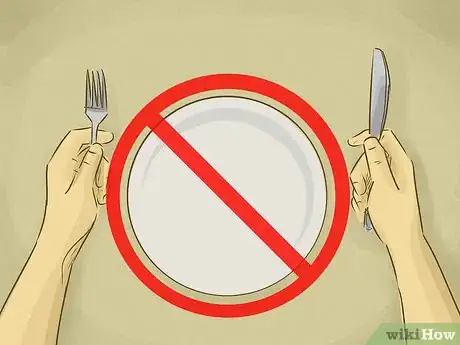


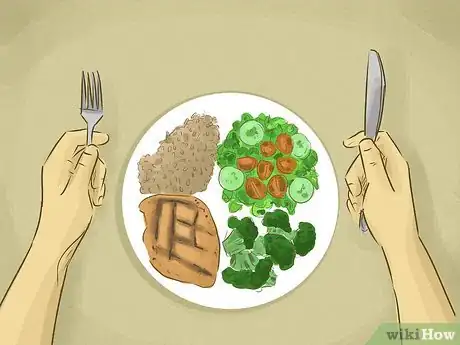

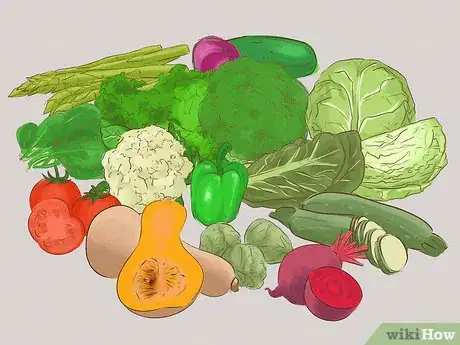
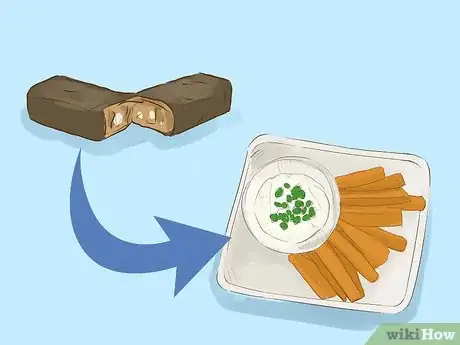
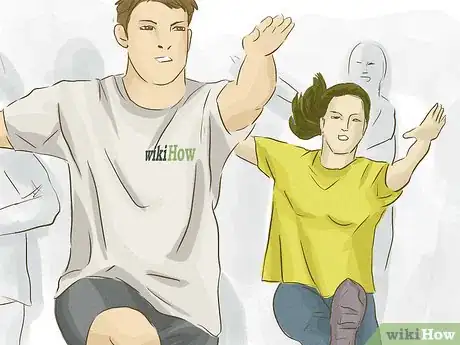
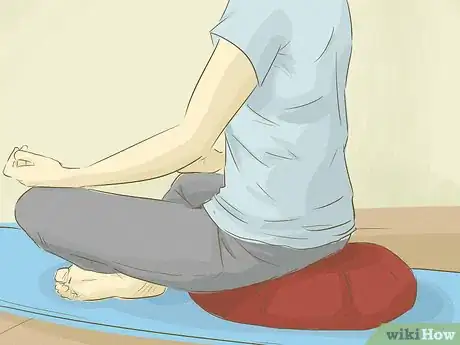

-Step-11-Version-3.webp)
